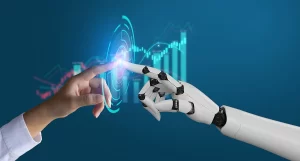Many users have a concern about the possible effects that viruses can have on hardware. This includes things like CRT monitors, overclocked floppy drives and even firmware corruption. These concerns are important because if you have a virus that has caused damage to your computer’s hardware, it can be very difficult to get the computer back to normal.
Disk thrashing
Disk thrashing can cause wear and tear on the hardware that is involved. In addition to the hard drive, it can also damage the controller chip, circuit board, and even the firmware of your computer. If you are experiencing disk thrashing, there are a few things you can do to get your PC back on track. The first is to freeze the drive and free up some space on the disk.
Having more than one virus on your computer can also lead to thrashing. A computer virus is designed to spy on you and take resources from you. This can be detrimental to your hardware, and even be impossible to remove.
Another potential source of thrashing is a system-wide policy that fails to properly handle page faults. Essentially, a thrashing incident means a system is spending more time handling page faults than it is actually performing useful work.
Overclocked floppy drives
The latest and greatest in PC hardware has one advantage over its predecessors in the pre-cpu days. That is, it is easier to buy new hardware than rehabilitate your old clunker. However, a little bit of love and care can go a long way towards making your machine a pleasure to use. If you are in the market for a new computer, consider a high-end solid-state drive, a good graphics card and a few gigs of RAM. In terms of performance, the latest generation of Intel x86 chips are a solid choice.
To get your machine up and running, you’ll first need to turn off the overclocking feature in the BIOS. You may also want to consider upgrading to the latest version of Windows, particularly if you are using a dual-boot setup.
CRT monitors
If you’ve ever wondered why CRT monitors can sometimes be damaged by viruses, there are a few things you need to know. Unlike LCD monitors, which are digital, the CRT monitors are based on a traditional technology that uses a beam of electrons to create an image.
The earliest monitors used a fluorescent screen. In the 1970s, Apple I and Sol-20 computer systems introduced video ports on the back of their computers. These were not fully developed for use in a computer until the 1980s, when color LCD monitors began to be manufactured.
One of the most common reasons for CRT monitor damage is when the computer is overdriven. This can burn out the flyback transformer or horizontal sync driver.
Another reason is when a computer is asked to run on a scan frequency combination it was not meant to be used with. For example, if you have an old PC that is running on a scan frequency of 650Hz and it is asked to run on a refresh rate of 720Hz, it will crash.
Firmware corruption
Firmware corruption is an issue that can cause many problems with hard drives. It can result in data loss, slow performance, or inability to access information on the drive.
There are several ways to detect firmware corruption. One way is to use a tool to monitor the firmware of your computer. This can help you identify unexpected changes and modifications that occur to your firmware.
Another approach is to look at the disk management screen of your Windows PC. If the drive is blank, it may be corrupted. Also, be sure to check your BIOS for integrity. Some motherboards can provide a backup BIOS, so it is important to have one available.
If you have an external or internal hard drive, firmware corruption can lead to issues with your drive. You may notice clicking noises on the drive, as well as beeping and other noises.
Trojans
Trojans are malicious programs that perform hostile attacks on a device. These include the PC-Write Trojan, which wiped out all the files on infected computers. Other Trojans, such as ZeuS, intercept login credentials and infect multiple computers.
They are sometimes disguised as useful applications, such as Microsoft Word. However, they are much more dangerous than the programs they seem to be. Many of them are designed to steal financial data. This could include banking details, IM log-ins, online gaming information, or phone numbers.
Another type of Trojan, a parametric Trojan, modifies the original circuitry of a chip. It can weaken transistors, thin wires, and subject the chip to radiation.
Some Trojans, such as the Stuxnet virus, disable the safety measures of a system. The Horst Gortz Institute for IT Security in Bochum, Germany, recently presented a method of identifying trojan function insertion.




